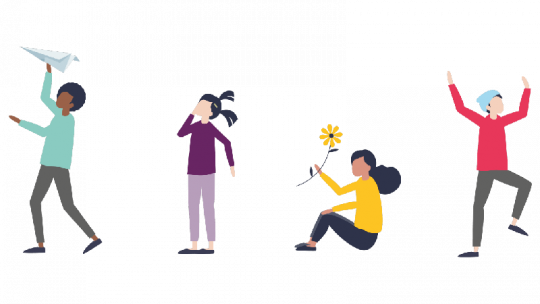
Download our free guide
Our Be School Ready guide is full of practical advice to get you and your child ready for starting primary school, including what to expect in the first few weeks, how to overcome concerns and ways to get involved with your child’s learning.
How to prepare them for learning
When it comes to learning, every child is different and will develop at their own pace. Your child won’t be expected to be able to read, write or do sums when they start school and you shouldn’t feel any pressure to teach these things. However if you want to, there are some things you can incorporate into play time at home to help your child get off to a great start at school.
Strengthening muscles
- Pinching, chopping and squeezing play-doh helps develop all the muscle groups needed for writing
- Finger rhymes like Five Little Monkeys and Incey Wincey Spider will get your child curling and stretching their fingers
- Ask your child to help you peg out the washing, it can help develop their pincer grip
- Make pictures using small objects that they’ll need to pick up using the thumb and index finger — stickers, sequins, paint, glue feathers etc, or try making jewellery by threading pasta or beads onto string
- Get your child to help in the kitchen, ‘tickling’ a crumble topping, kneading dough and stirring cake mix – encourage them to stir clockwise and anti-clockwise
- Puzzles, lego and building blocks are all great for increasing strength and developing hand-eye coordination
- Encourage your child to climb on play equipment at the park. Pulling themselves up will help strengthen their arms and shoulders
Mark making
Making marks helps to develop creativity and imagination, and offers a new way for children to communicate their thoughts and feelings.
- Give your child a paintbrush and a bucket of water and let them ‘paint’ the garden fence or patio. Or buy some pavement chalks and let them create a large-scale masterpiece
- If your child likes getting messy and the great outdoors, they could make muddy handprints, bark and leaf rubbings, press flowers or draw in the dirt using twigs and stones
- Buy rolls of lining paper and encourage your child to draw roads to play with their cars on, draw around your bodies and colour them in, or just fill the gaps between lots of swirly lines
- Technology can also be used, there are lots of apps that children can draw and make shapes with
- Think big and make your own ‘art attack’. Create a giant picture by laying out colourful scarves, cushions, plastic plates and cups, toys etc
Recognising letters and numbers
Exploring letters and numbers will help when it comes to maths, English and reading. Make it fun and they’ll be keen to continue learning at school.
- Encourage your child to spot numbers on everyday items, from street signs to car number plates
- Help your child to find the letters of their name in books, on signs and posters
- Count everything, from the potatoes on their plate to stairs up to bed. Sing counting songs too, such as Three Little Ducks and Ten Green Bottles and play counting games like Snakes and Ladders and Ludo
- Look at the different letters and discuss their shapes. Which letters are curved, which are straight?
- Use pastry or dough to form letters and bake them. Add jam for a tasty treat!
- Go on a letter hunt. Choose a letter and ask your child to find items around the home beginning with that letter
Related entries


